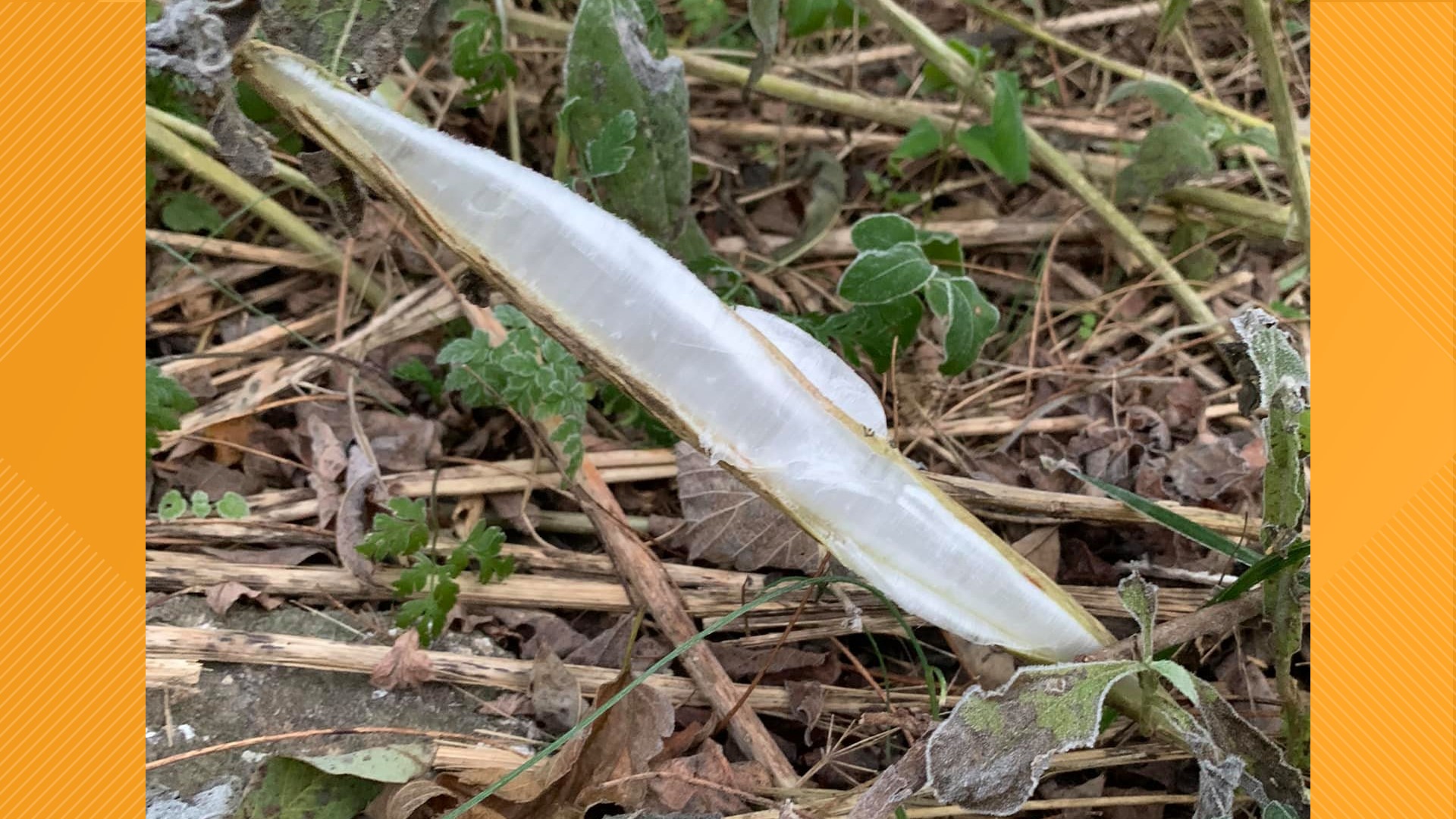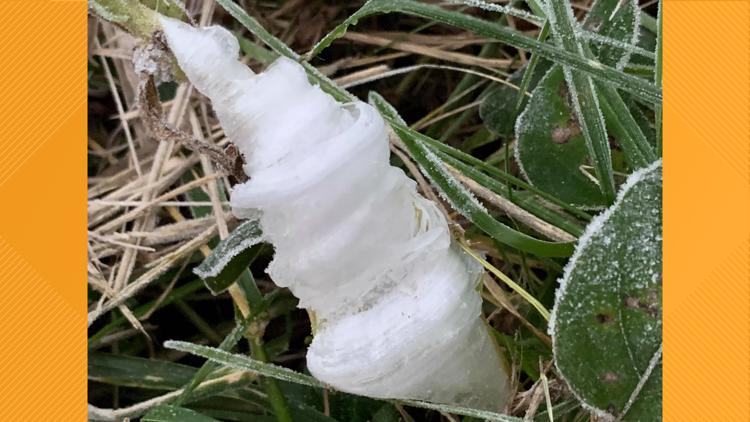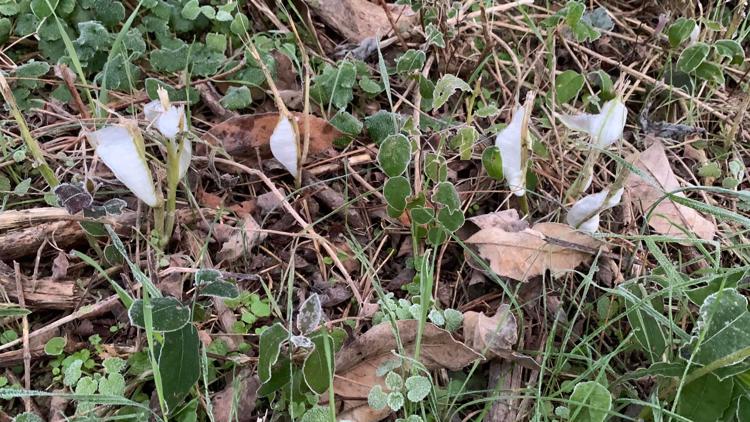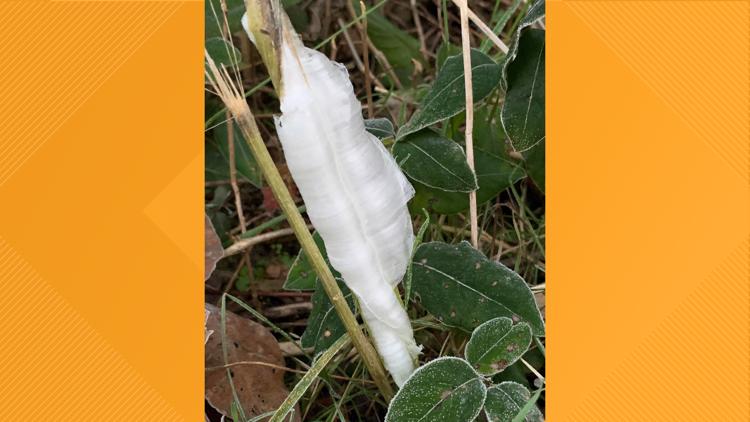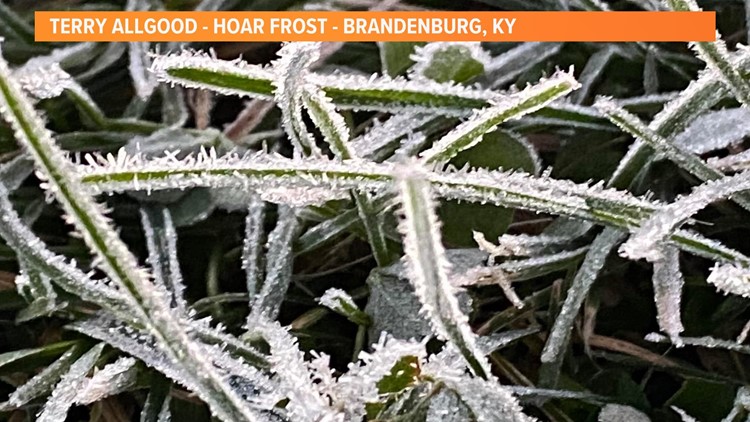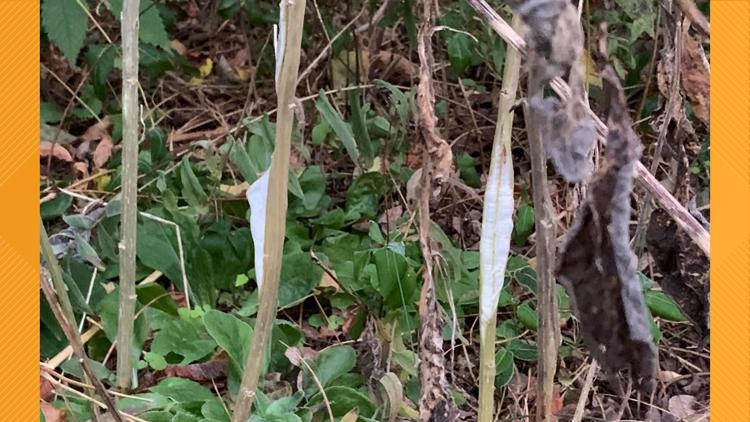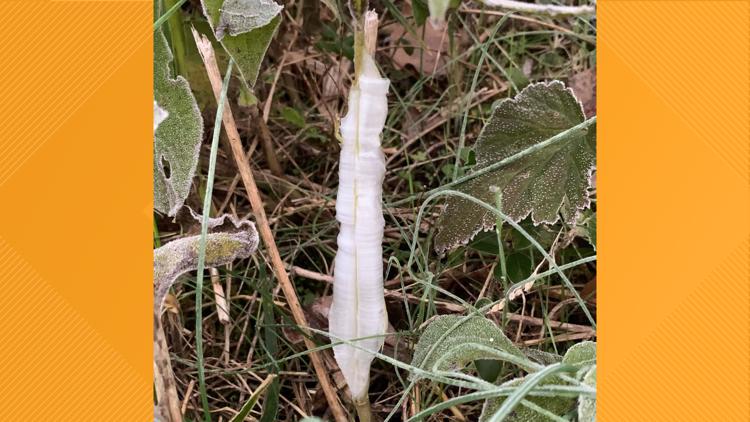WILLISBURG, Ky. — We had two unusual weather phenomena Wednesday morning with the freezing conditions that typically only happens about once a year. Conditions have to be just right for it to occur.
The phenoms that appeared today were Frost Flowers and Hoar Frost.
Frost Flowers form when the ground and the stems of certain plants aren't frozen yet, but the air temperatures drop below freezing. The water in the plant stem expands by "capillary action", splits the stem and the exposed water freezes on contact with the air.
As more water comes out, the "frost flower" expands to form the larger "pedals". No two of these are alike. Of course, it melts away quickly...and once the ground becomes frozen--this set-up isn't possible.

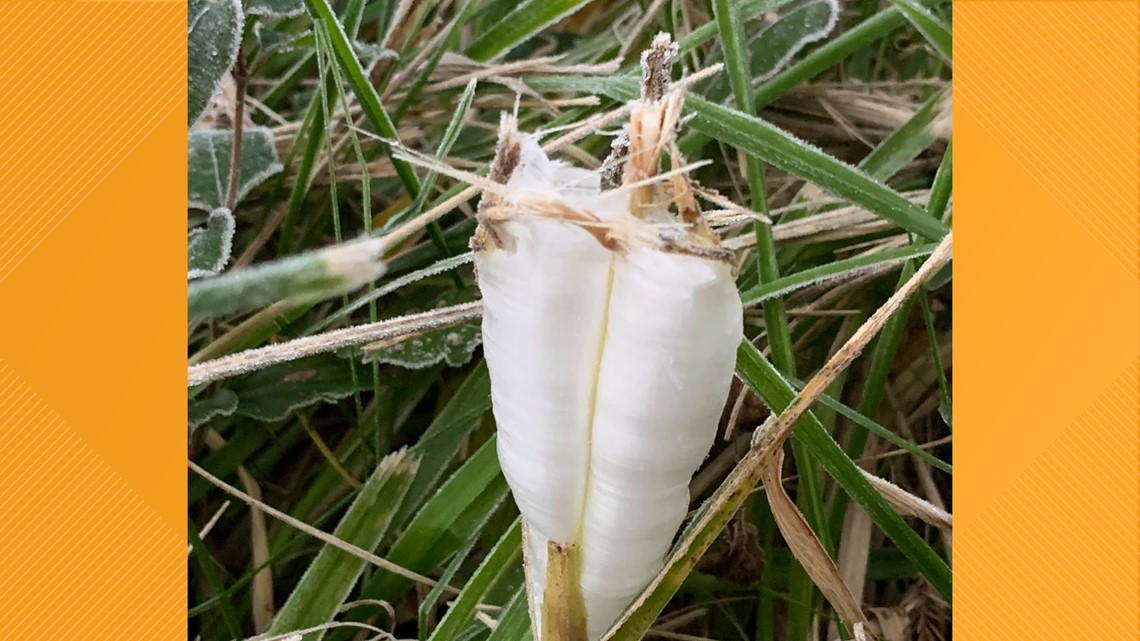
Hoar Frost forms when water vapor basically "skips" the process of changing to water droplets and goes directly to ice crystals due to the below-freezing temperatures.

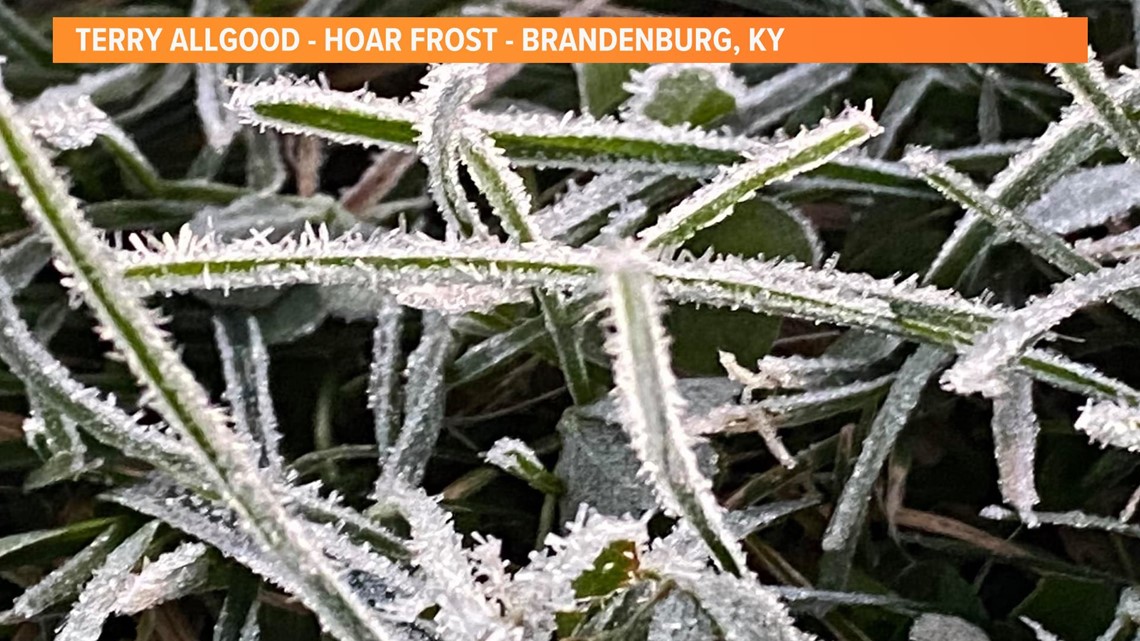
This creates a spiky, hairline appearance on things like, for example, blades of grass.
Thanks to Crystal Hollkamp and Terry Allgood for the photos.
PHOTOS | Frost Flowers, Hoar frost
►Make it easy to keep up-to-date with more stories like this. Download the WHAS11 News app now. For Apple or Android users.
Have a news tip? Email assign@whas11.com, visit our Facebook page or Twitter feed.


Here's a longer version/explainer of the process and more pictures from our local National Weather Service:
"Frost flowers are thin layers (perhaps credit card thickness) of ice that are extruded through slits from the stems of white or yellow wingstem plants, among others. Their formation requires freezing air temperature, soil that is moist or wet but not frozen, and a plant's stem that has not been previously frozen. (Practically speaking, a once per year event, although not all individuals produce frost flowers on the first day of good conditions). The water in the plant's stem is drawn upward by capillary action from the ground. It expands as it freezes and splits the stem vertically and freezes on contact with the air. As more water is drawn from ground through the split, it extrudes a paper thin ice layer further from the stem. The length of the split determines if the frost flower is a narrow or wide ribbon of ice. It curls unpredictably as it is extruded, perhaps from unequal friction along the sides of the split, to form "petals". These flowers, no two of which are alike, are fragile and last only until they sublimate or melt."
Now, let's also understand more about Capillary Action. Capillary action is defined as, "the movement of water within the spaces of a porous material due to the forces of adhesion, cohesion, and surface tension."
The United States Geographic Survey (USGS.gov) describes the process further...
"Capillary action occurs because water is sticky, thanks to the forces of cohesion (water molecules like to stay close together) and adhesion (water molecules are attracted and stick to other substances). Adhesion of water to the walls of a vessel will cause an upward force on the liquid at the edges and result in a meniscus which turns upward. The surface tension acts to hold the surface intact. Capillary action occurs when the adhesion to the walls is stronger than the cohesive forces between the liquid molecules. The height to which capillary action will take water in a uniform circular tube (picture to right) is limited by surface tension and, of course, gravity.

